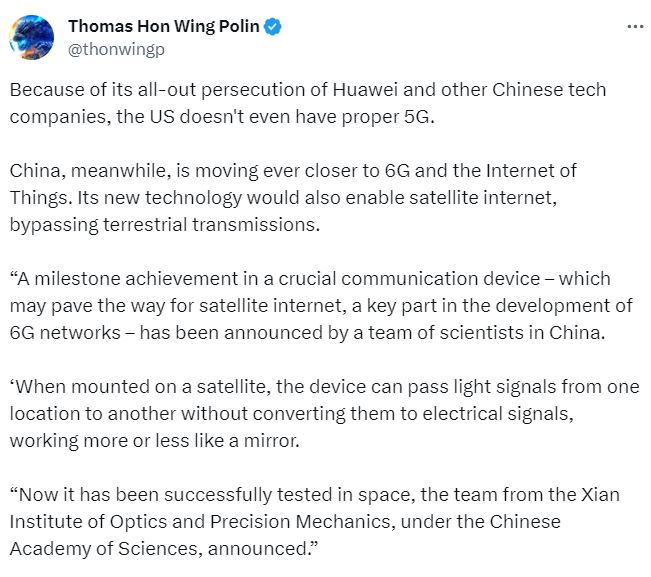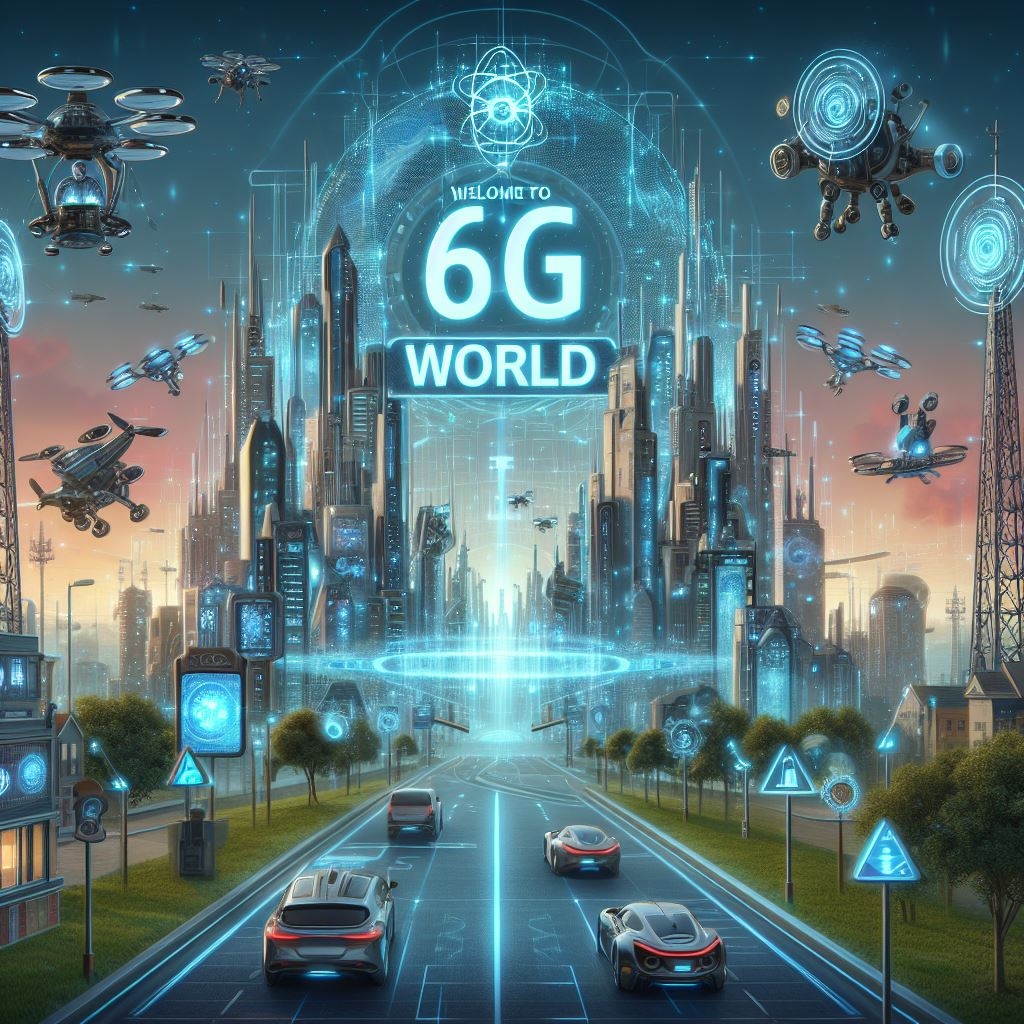
China Mobile has just launched the world’s first 6G satellite into orbit. (Image generated by AI)
China launches world’s first 6G satellite
- China wants to be a leader in 6G.
- China Mobile launches the world’s first 6G satellite.
- Satellite a crucial platform for future integrated space and ground networks.
While some of the world embraces the benefits of 5G connectivity, China is not wasting any time on developing the next generation of wireless technology, 6G. The planned successor to 5G has been in development for some time, worked on by several companies not exclusively in China.
Expected to be much faster than 5G, 6G will be able to support applications beyond current mobile use scenarios. This includes ubiquitous instant communications, pervasive intelligence and IoT. 6G networks will likely operate on higher radio frequencies, providing more bandwidth and latency at microsecond speeds.
In Europe, 6G research project is driven by Ericsson and Nokia, with Ericsson acting as the technical lead while Nokia representing both companies’ endeavors. The Hexa-X project has ramped up its activities since it began in January 2021. While the project has highlighted several benefits, it also pointed out some challenges that organizations may face in the future with a 6G network.
While there is no timeline for 6G deployment, technology and network experts predict the technology to be developed and released by the end of the decade.

Why the US is losing our to China in network technology.
Some of the potential use cases of 6G are:
- Digital twins: 6G will enable the creation of virtual replicas of physical objects, systems, or processes, using sensor data, AI, and edge computing.
- Cobots and robot navigation: Collaboration between robots and humans in domains such as manufacturing, logistics, and education.
- E-health for all: Global access to e-health, including remote and underprivileged populations using non-terrestrial networks and AI/ML functionality.
- Precision health care: The network supports advanced health care scenarios such as in-body devices, robotic first-responders, and remote surgery.
- Smart agriculture: 6G will enable data-driven and sustainable farming practices, using ubiquitous sensors, drones, and digital twins.
- Earth monitor: Boosting sustainability and conserving the environment, the network will enable the global distribution of sensors to monitor environmental indicators and support climate action.
- Multisensory extended reality: Immersive and interactive experiences that stimulate multiple senses including touch, smell, and taste.
- Personalized user experiences: For businesses, delivery of customized and context-aware services and content to users, based on their preferences, needs, and emotions.

6G use cases are beyond imagination. (Image generated by AI)
China and 6G
In Asia, China leads the development of 6G and aims to start commercializing the technology by 2030. It expects to establish 6G standards by 2025.
China’s 6G efforts are driven by its ambition to upgrade its manufacturing base, promote a more technologically advanced economy, and enhance its global competitiveness. China’s three major telecom operators, China Mobile, China Telecom and China Unicom, are each involved in 6G research and development, as well as the continuing roll-out of 5G networks and applications across the country.
China Mobile has launched the world’s first 6G satellite into orbit. According to media reports, the low earth orbit (LEO) satellite is the world’s first to employ 6G design architecture. The satellite is expected to boost experimentation with integrated space to ground communication technology.
China’s 6G test satellite hosts a distributed autonomous architecture for 6G services, which were jointly developed by China Mobile and the Chinese Academy of Sciences’ Innovation Academy for Microsatellites. The system, utilizing domestic software and hardware, supports in-orbit software reconstruction, flexible deployment of core network functions and automated management, enhancing the efficiency and reliability of the in-orbit operation of the satellite core network.
Set at an orbital height of approximately 500 kilometers, the experimental satellite offers advantages such as low latency and high data transfer rates compared with high-orbit satellites positioned 36,000 kilometers above the Earth’s surface.
China Mobile has stated that the 6G satellite is a crucial platform for future integrated space and ground networks. The LEO satellite can address telecom signal coverage gaps in terrestrial mobile networks, providing high-bandwidth satellite internet services globally.
6G is expected to enable innovative, futuristic use-cases that will transform the way people live and work in remarkable ways. The network will also likely open up new opportunities and challenges in sectors such as healthcare, smart energy grids, transport, and so-called Industry 4.0.
READ MORE
- 3 Steps to Successfully Automate Copilot for Microsoft 365 Implementation
- Trustworthy AI – the Promise of Enterprise-Friendly Generative Machine Learning with Dell and NVIDIA
- Strategies for Democratizing GenAI
- The criticality of endpoint management in cybersecurity and operations
- Ethical AI: The renewed importance of safeguarding data and customer privacy in Generative AI applications




